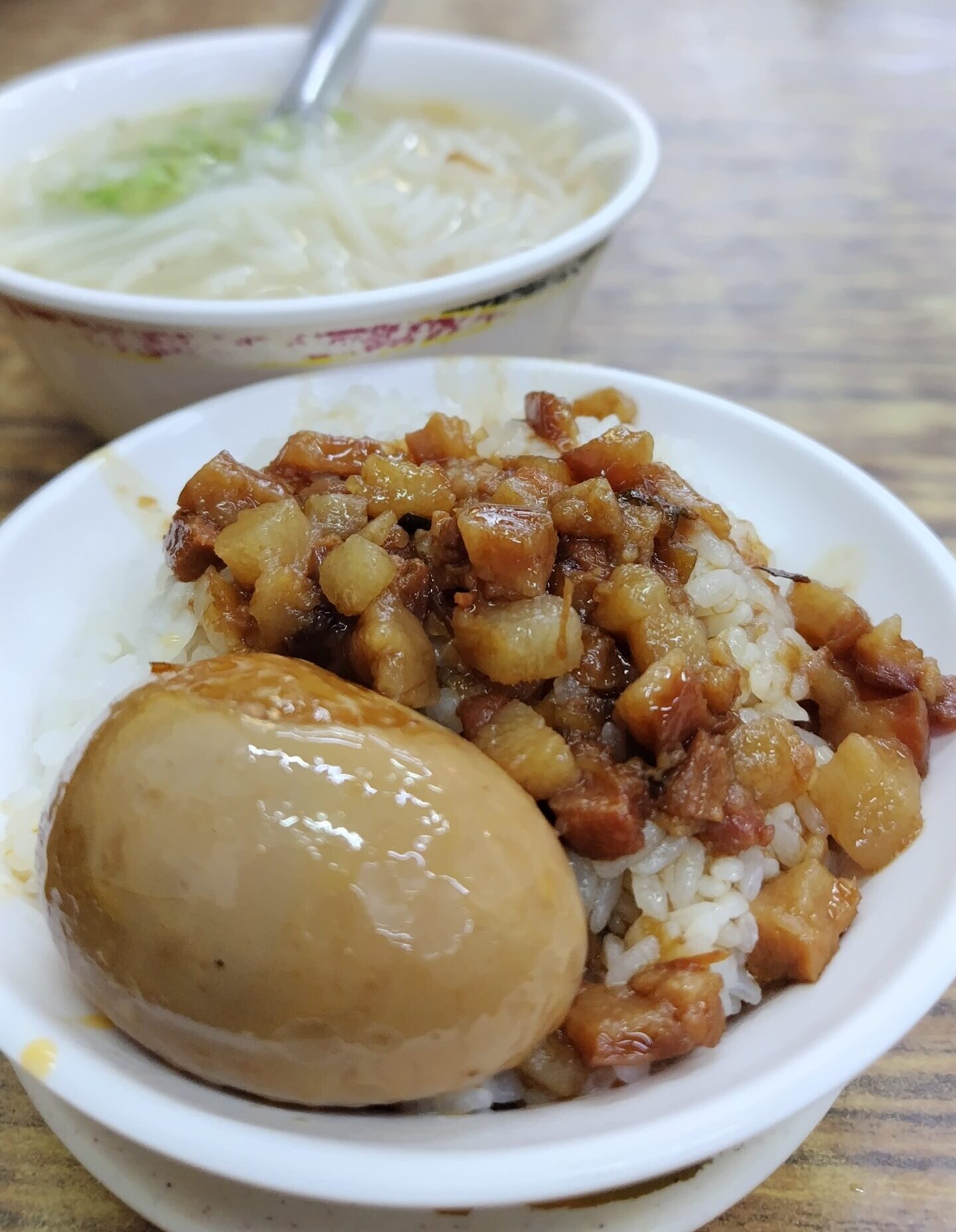I spent two weeks in Tainan, Taiwan, in October 2023, where I embarked on a culinary journey through local eateries. In this article, I will introduce these foods and explain how to order at local restaurants.
How to Order at Taiwanese Local Eateries
Dine-in or Takeaway
Before even placing your order or entering a shop, there’s something you need to state: whether you’ll be eating in or taking away. “Dine-in” is “內用 (nèi yòng)”, and “takeaway” is “外帯 (wài dài)”. These are essential phrases to remember for any trip to Taiwan.
If you’re dining in, once the staff acknowledges you, simply hold up your fingers to indicate the number of people and say “內用 (nèi yòng)”, and they will likely guide you to a table.
Write Your Order on Paper (Use Tally Marks for Quantity)
Don’t expect local eateries to have menus with photos. You’ll usually find an order form at the entrance or on your table. You write down the quantity of items you want on this paper.
If you already know what you want, that’s great. If not, you’ll have to imagine the dish by looking at the Chinese characters. Once you’ve decided, write the quantity in the column next to the item name. For quantities, use tally marks. In the photo, I wrote “10” for dumplings using Arabic numerals, and it seemed to be fine.
At this time, don’t forget to write your table number. In most eateries, there will always be a number on your table or at the counter. Usually, there’s a space for it at the top of the order form.
Hand your order form to the staff when they come by, or take it to the cashier. In busy shops, you might have to wait a while if you don’t actively try to get their attention, so raise your hand or signal them.
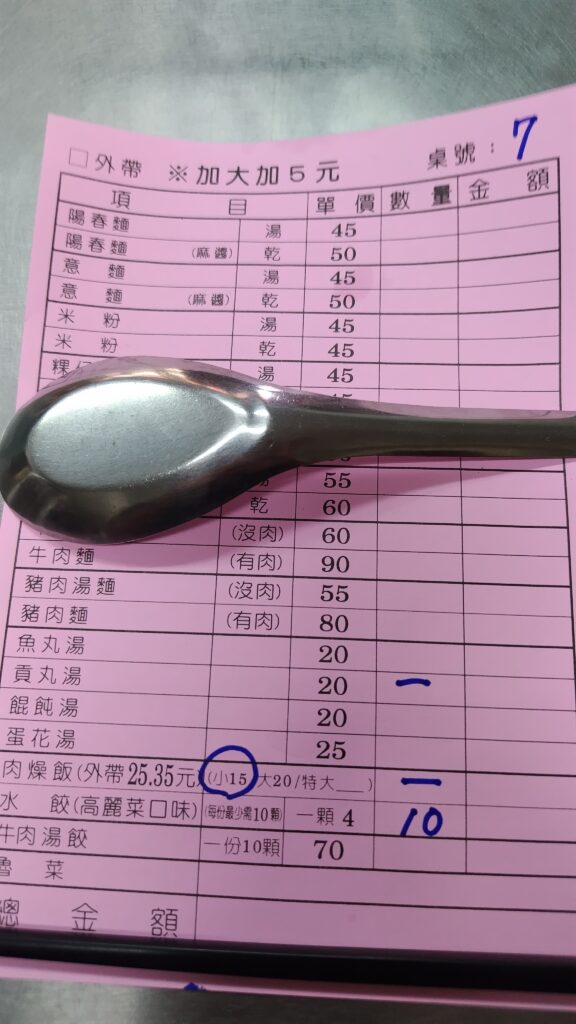
Lu Rou Fan (Braised Pork Rice) – Different Names in Taipei and Tainan
Speaking of quintessential Taiwanese cuisine, Lu Rou Fan (滷肉飯) comes to mind. Lu Rou Fan is relatively inexpensive compared to other dishes and has a surprisingly light flavor despite its rich appearance. If you’re visiting Taiwan, this is a dish I recommend trying on your first day.
Smaller shops with fewer menu items might not even have the order forms I just described. In that case, you’ll have to state the item name at the cashier, but for Lu Rou Fan, saying “Lu Rou Fan” with Japanese pronunciation will likely be understood. You can indicate the quantity with your fingers.
If you want to add a braised egg as a topping, say “加滷蛋 (jiā lǔ dàn)”. For example, if you want to order several items and specifically want a small bowl of Lu Rou Fan, you can shorten “小椀滷肉飯” to “小滷 (xiǎo lǔ)”, and it will be understood.
As an extension, if you want a small Lu Rou Fan with a braised egg, you can say “小滷加滷蛋 (xiǎo lǔ jiā lǔ dàn)”. This tip comes from Taiwanese food YouTuber ZORO, and I can confirm it worked for me. The photo is from that experience.
Also, be aware that in Tainan City, southern Taiwan, the name “滷肉飯” might not appear on menus. In Tainan, it’s called “肉燥飯 (ròu zào fàn)”.
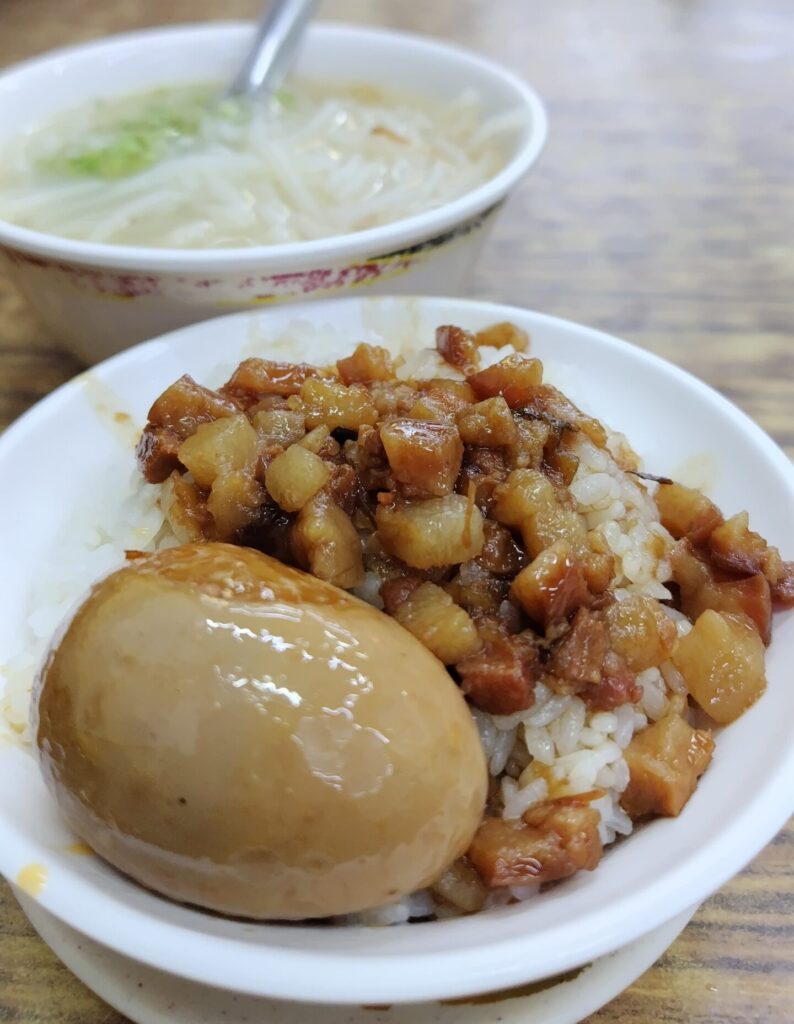
Light Breakfast: Soy Milk and You Tiao (Fried Dough Sticks)
Sometimes you want a light breakfast, right? In such cases, I recommend warm soy milk and “you tiao” (油条, Chinese fried dough sticks) from takeaway shops specializing in soy milk or morning porridge.
For “you tiao,” it’s best to go early in the morning when they’re freshly fried and crispy. Or, at popular shops with high turnover, you might be able to get them fresh.
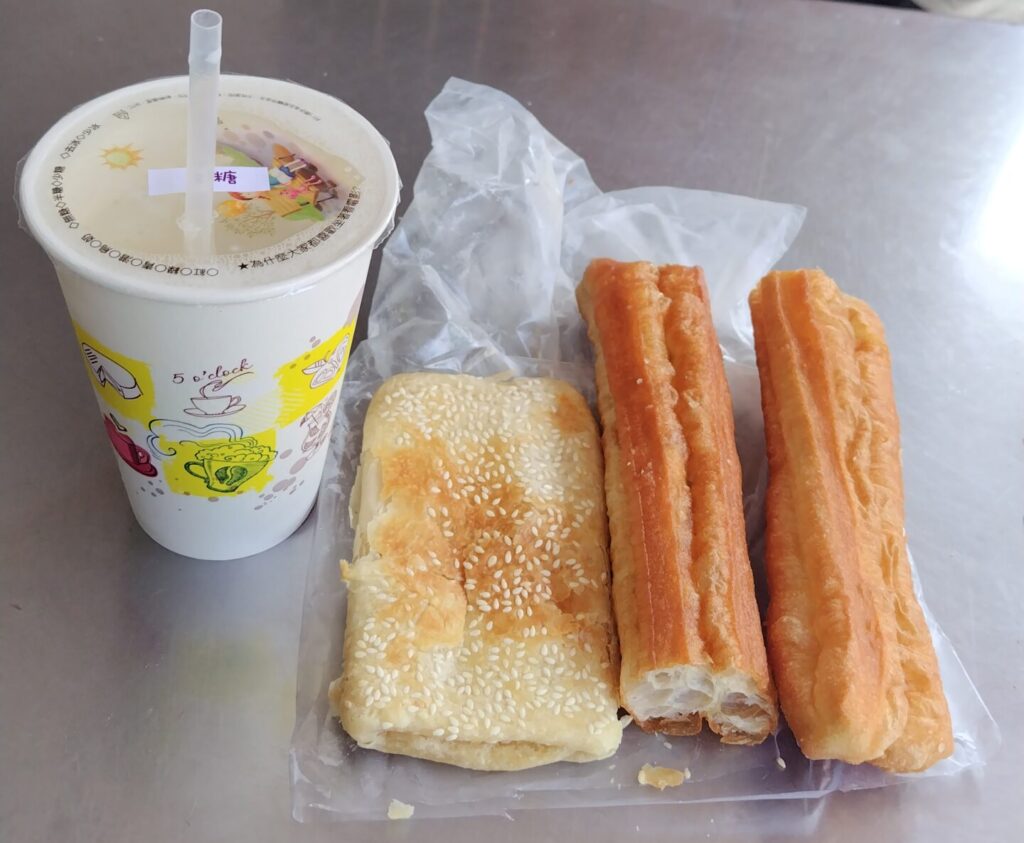
Snack Recommendation: Dou Hua (Tofu Pudding), Especially Adzuki Bean Dou Hua
How about “Dou Hua” (豆花, tofu pudding) for a snack? A famous shop in Tainan City even had a Japanese menu. There were so many types of Dou Hua that I couldn’t imagine the taste just from looking at the pictures.
Therefore, for your first time ordering Dou Hua in Taiwan, I recommend the most basic and safest option for Japanese palates: adzuki bean Dou Hua, “紅豆豆花 (hóng dòu dòu huā)”.
It features slightly warm Dou Hua in a lightly sweetened broth, topped with subtly sweet red bean paste. While it tastes exactly as you’d imagine, it’s the perfect choice for those who don’t want to experiment or risk a bad pick on their first order. Saying “Hong Dou Dou Hua” as it sounds in Japanese should also be understood. Give it a try!
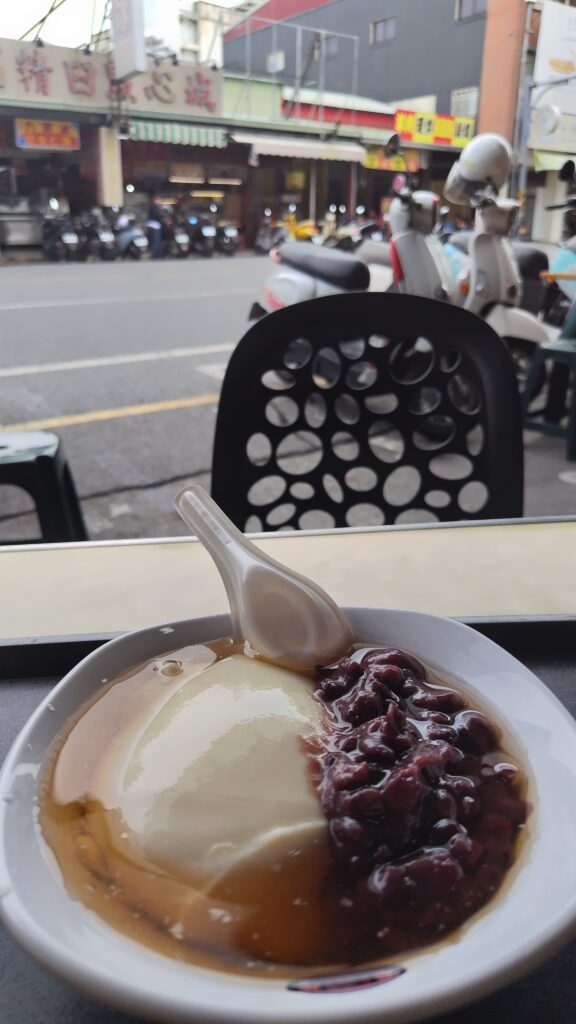
The Super Difficult Challenge: Ordering at Drink Stands
Taiwan is the birthplace of tapioca drinks, which took Japan by storm. I thought I had studied how to order in Taiwan from YouTube videos in advance. However, the menus at actual drink stands in the city are complex, and it’s impossible to tell what an item is just by its name. The prices were also considerably higher than I expected.
After wandering around, struggling to order, I found a green bean drink stall, like the one in the photo. They put frozen, semi-thawed mashed green bean paste into a cup. After buying it, you have to wait a while because it’s too thick to suck through a straw immediately. It’s lightly sweetened and quite hearty, so if you want something light, this drink alone might be enough.
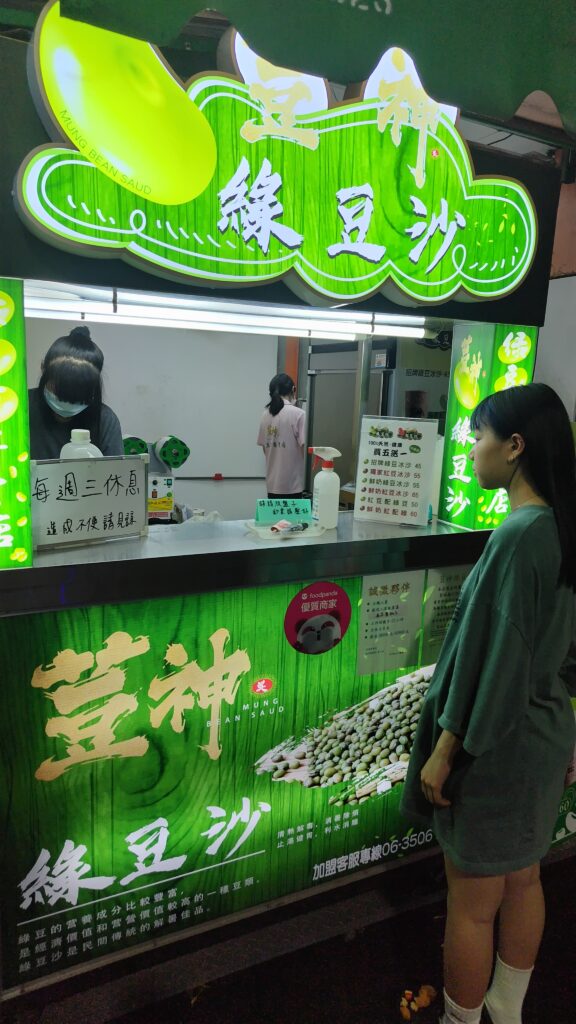
Papaya Milk (Mu Gua Niu Ru) Available at Convenience Stores
Let me introduce one specialty that you can buy at convenience stores: Papaya Milk (木瓜牛乳). This product is available at all convenience stores and is often sold out due to its popularity.
The taste is reminiscent of nostalgic fruit milk, like what you might drink after a bath at a public bathhouse. It’s so easy to drink that I even wondered if it contained real papaya or was just a flavored imitation, but apparently, it does use real papaya.
There are various brands of papaya milk. Also, the drink sections of Taiwanese convenience stores stock many unusual products not found in Japan, so why not try other drinks besides papaya milk?
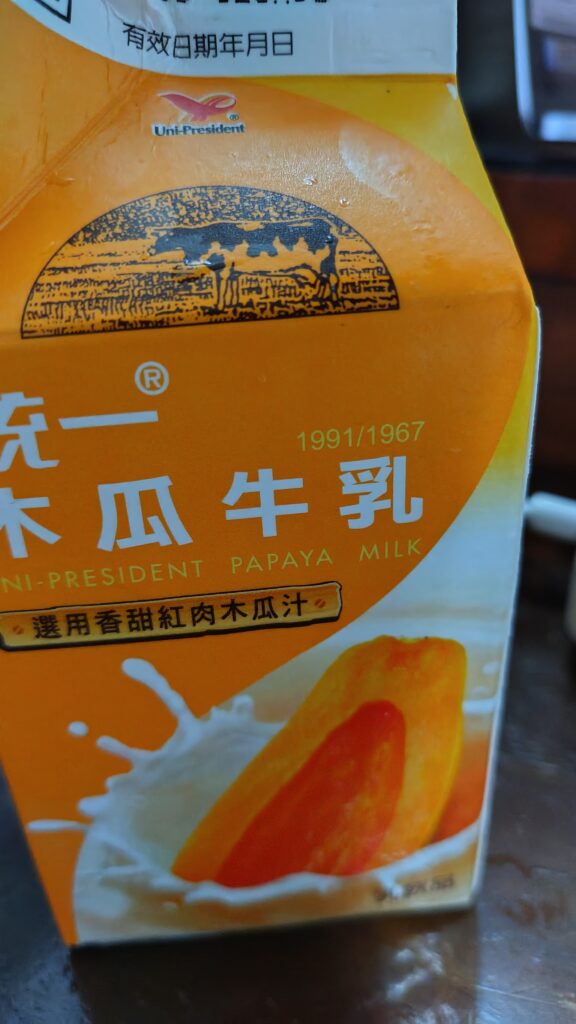
Taiwanese Menu Items: When Kanji Don’t Make Sense
Chinese restaurant menus often name dishes after their ingredients and cooking methods, so you can usually guess what kind of dish it is by looking at the Kanji characters. However, there are some menu names where you can read the Kanji but still have no idea what the dish is.
For example, one day I was in the mood for fried rice and was looking at the fried rice section of the menu. I couldn’t for the life of me figure out what “什錦炒飯 (shí jǐn chǎo fàn)” meant. So I searched online and found out it meant “Assorted Fried Rice” (五目炒飯). I never would have guessed that “什錦” meant “assorted” or “mixed.”
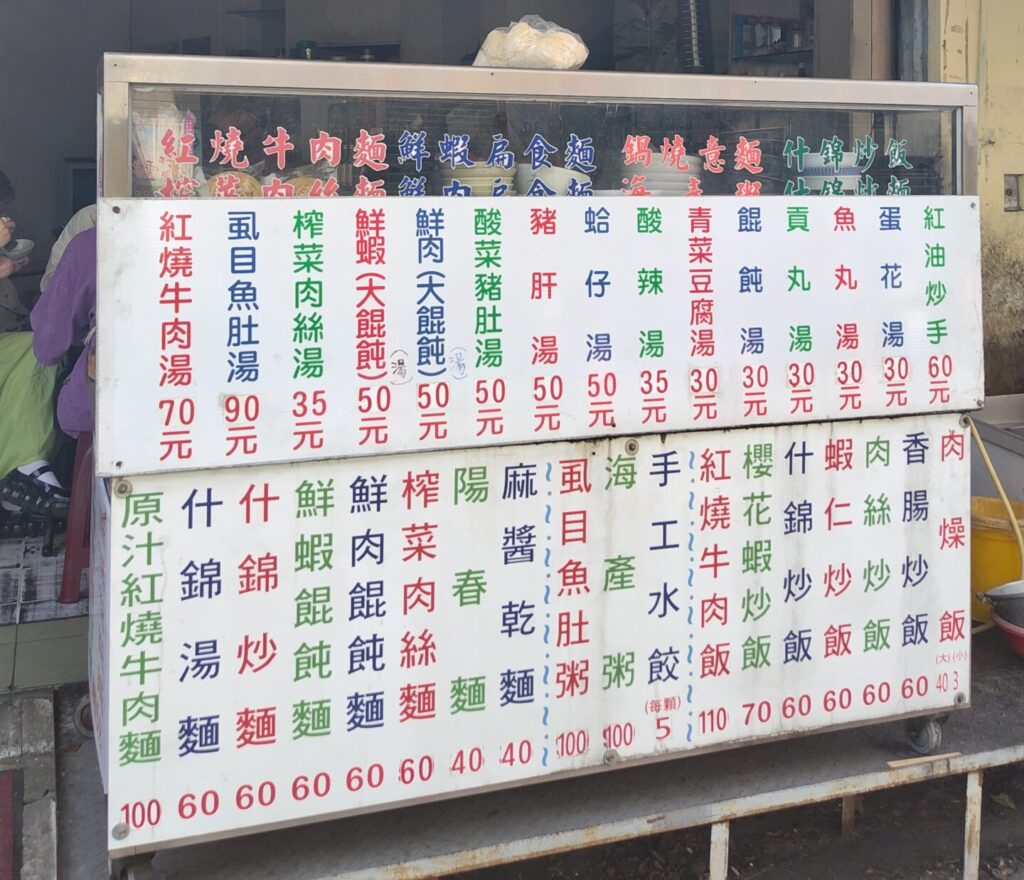
Finally, the Magic Word: “Cha Gai Yi Ga”
I’ve explained recommended menu items and how to order so far, but there are times when pronouncing the item name is difficult, right? In such situations, the phrase that will always get you by is “這一個 (zhè ge yī ge)”, which sounds like “Cha Gai Yi Ga” (meaning “this one”).
If you point to the menu item you want and say “Cha Gai Yi Ga,” you’ll be understood. I’ve relied on this when in doubt. They’ll appreciate it more than if you use English. Give it a try!

